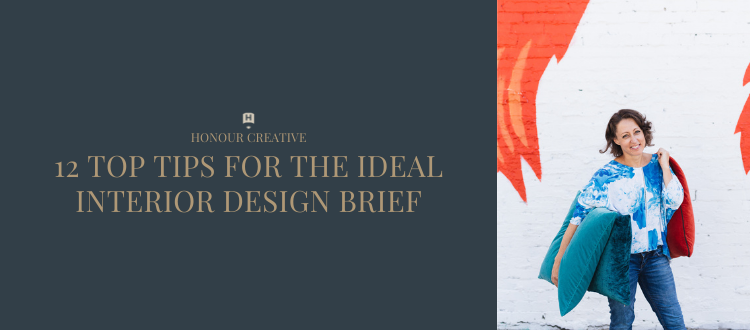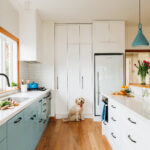12 Top Tips for the Ideal Interior Design Brief
A critical part of the residential interior design process is the Design Brief. Your brief will form the foundation for your interior design project, encompassing not only your likes and dislikes but the hopes, dreams and expectations you have for your interior space. By creating a design brief, you and your designer will have a clear understanding of the requirements of your project. Committing some time and thought at the start of your project can save you a whole load of time, money and stress later!
Not sure what to include?
The pointers below and questions our template are typical of how we approach a design brief for a new Honour Creative client. Use these to generate some ideas for your project, complete the handy template and your perfect interior design brief will be done in no time and you’ll be ready to move on to the next step in your project: finding an interior designer.
WRITING THE BRIEF
- As with any project, let’s start with your objectives; what do you want to achieve? Consider how you want the space to look… how it works and functions for you (and your family) and how it will make you feel.
- Identify your interior design style. If you’re unsure about what that is, think about other areas in your life where you feel more confident about your style. What do you like to wear? Where do you like to shop, eat out, relax? Homes, like our clothes, are an extension of ourselves and, like our clothes, the better they fit our true selves and lifestyle, the more comfortable and confident we feel in them. Are you a dedicated follower of fashion for example, an easy, breezy, comfy and relaxed guy/gal or do you prefer classic lines and tailored clothing?
- Become aware of how you operate within your existing space; what does and doesn’t work? Interior design encompasses the functioning of the space as well as how it looks and feels — and if there are aspects of how your space functions that inhibit or irritate you, your space will never feel right, no matter how great it looks!
- How do you want the spaces in your home to relate to each other? Should they feel distinct to emphasise a special use or should they tightly match to create a larger overall impression?
- Does the scope of your brief include space planning? For example, the number and uses of rooms, who uses the spaces, at what times and for how long?
- What words and emotions would you like to evoke in yourself and others when entering your home? Consider what would be the ultimate compliment to you when friends first see your new space.
- Identify key places where you have felt truly happy. This may be holiday spots, previous homes, even work! What is/was it about these places that felt ‘right’?
- Find images that help capture the mood, contain a detail or feature a colour that you respond to. You might even identify some features you don’t like! Being clear about what you don’t like is just as important as identifying what you DO like.
- What likes/dislikes are shared amongst all members of your household and what are you not in agreement about? The planning stage is generally the best time to tackle these inconsistencies.
- Identify your heating, cooling and ventilation requirements and the impact of natural light on your space(s) — do you want more or less?
- Budget. Be very clear about how much money you want to spend on your project.
- Timeframe. When would you like the project to start? Is there a specific deadline for completion of the project or are you fairly relaxed about timeframe? Is there a specific reason for a deadline such as family visiting from overseas for example.
Finally, in the words of the song…
“Two out of three ain’t bad.” In my 20 years’ experience in the field of design, when considering time, budget and quality you can realistically only have two. So please be wary of any interior designer who promises all three (tight timeframe, superior quality and low budget). You’re likely to be disappointed.
To download our complete Top Tips Design brief and template click here
Looking for guidance for a commercial project? The basic considerations are similar but the objectives for work or community spaces will obviously be quite different, so give me a call on 027 474 9194 to discuss.




